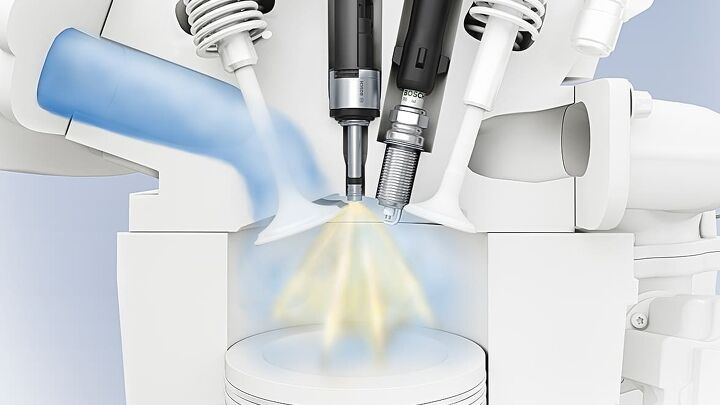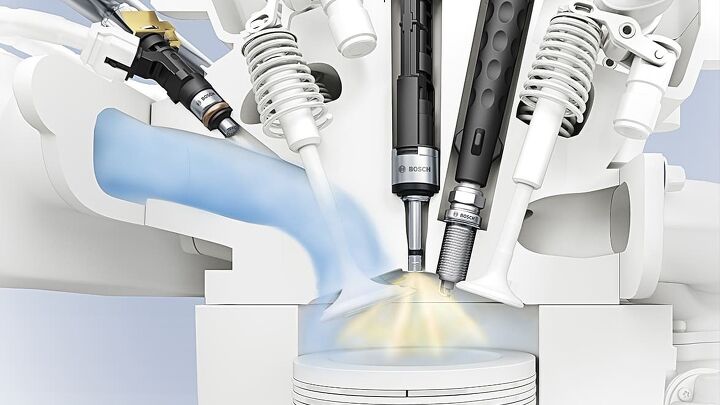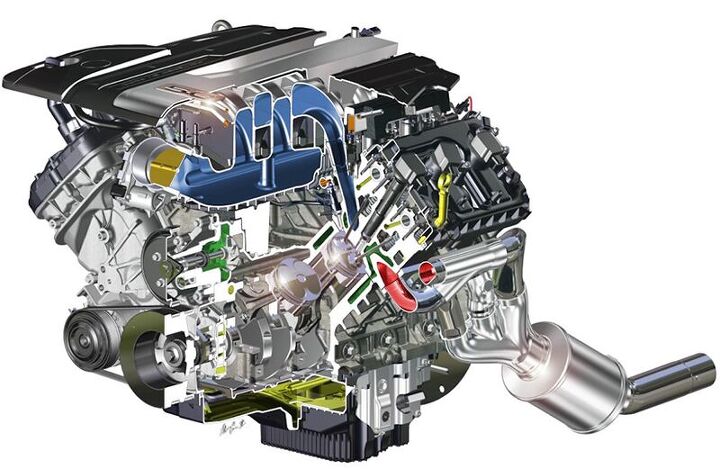Motorsports Racing News & Blog Articles
Ask MO Anything: Why is there No Gas Direct Injection on Motorcycles?
Dear MOby,
I was looking at the cutaway drawings of the new GSX 1000GT today, and it occurred to me that motorbikes are still using port injection. Meanwhile, direct injection is becoming pretty common in cars and trucks.
My last Yamaha outboard had a nifty high pressure injection system. Obviously engineering isn’t the problem. DI is beneficial in meeting emissions requirements; so it seems that there are benefits to implementing it.
So, MO, what is keeping motorcycle manufacturers from direct injection systems?
Thanks,
MM
Dear Mimi,
We summoned up our favorite source of information for this kind of thing, R&D Director at MV Agusta and CRC, Brian Gillen. (Since no motorcycles I know of use direct injection and neither do my old cars, I had to first ask Brian what it was?)
BG says: “Port fuel injection has the fuel injector in the intake port before the intake valve, direct fuel injection has the injector spraying directly into the combustion chamber.
“The simple reply is that with current motorcycle emissions standards, available space, and retail price targets, port injection remains the best solution for now.
Port injection uses a single low-pressure fuel pump (typically 4 bar) with low energy requirements to drive the fuel pump and injectors – and that translates directly into lower costs. Direct injection requires a low-pressure fuel pump as well as a high-pressure fuel pump (typically over 200 bar): A lot of energy is required to drive that fuel pump, including a bigger generator, and on top of that more expensive injectors all translate into much higher costs.”Ciao!
BG

Port injection, in the new Suzuki’s case, spritzes in fuel just upstream of each pair of intake valves.

Meanwhile, the direct injection injector inserts itself right into the combustion chamber. (image courtesy of Bosch)
Advantages of gas direct injection, or GDI, include lower combustion chamber temperatures, which allows higher compression ratios (great for superchargers or turbos), resulting in better fuel efficiency, lower CO2 emissions, and all-around better everything. There are drawbacks, though, and for that reason the latest thing is…
… PDI, or port and direct injection. This combines the strengths of port and direct systems in a complementary way. According to Bosch, each system delivers its benefits in terms of fuel efficiency and emissions under different operating conditions: “Port fuel injection shines with reduced friction losses in partial-load operation, while direct injection excels close to full load with its increased knocking limit. With its good mixture homogenization, port injection generates fewer particles, has lower noise levels, and consumes less fuel in situations with low engine load thanks to its lower friction loss compared to direct injection.”
That would also explain why direct injection would be the better choice in an outboard marine engine, which is going to be running much more at bigger, steady throttle openings than the typical motorcycle engine.
Anyway, according to this four-year old Car & Driver article on PDI, about half of the new US car and truck fleet was using direct injection as of 2017, and PDI’s been around since Toyota stuck it in the 2006 Lexus IS350’s 3.5-liter V-6.
Ford is heavily into PDI in its turbocharged and naturally aspirated V-6 and V-8 engines, including the F-150 Raptor pickup and the Ford GT supercar – both powered by the then-new 3.5-liter EcoBoost V-6 with port and direct injection. For 2018, Ford built a new 5-liter V-8 for its Mustang GT, the Coyote Generation 3, that uses what it now calls “port direct fuel injection.”
“The engine’s 460 horsepower and 420 lb.-ft. of torque represent improvements over the current model’s 435 horsepower and 400 lb.-ft.,” Ford said. “The result is an engine that delivers robust low-end torque, high-rpm power and improved fuel efficiency.”
A lot of that was down to the direct injection, which allowed a full 1-point bump in compression ratio to 12:1 and all the good things that flowed from that.
Still, that’s a lot of complexity for 5% more power: 460 hp pushing 3,850 pounds gives us 8.4 lbs/hp. That’s almost as good as the Kawasaki Z400 we just tested, 8.3. But good luck keeping up with the bike that made the most hp in our 900 nakeds comparo a while ago: The Triumph Speed Triple has 1 hp for each 3.8 lbs (and the bike hp figures are rear-wheel ones). But then, it doesn’t seat four and have cup holders.
In the end, then, why motorcycles don’t use direct injection sounds like it comes down to the same reasons why we don’t use superchargers and turbos much; motorcycles are generally fast enough for most of us already without the added complexity and weight. Though gas direct injection, or GDI, does aid in lowering emissions and increasing performance, the disadvantages outweigh the advantages on most motorcycles (all motorcycles, AFAIK), where weight and packaging are always bigger considerations than they are on boats and automobiles. And so far, bikes are able to meet their emissions goals without GDI. Let’s hope the trend continues.
Direct your motorcycle-related questions to This email address is being protected from spambots. You need JavaScript enabled to view it., Remember, the only dumb question is the one you ask in public using your real name. Oh brother.
The post Ask MO Anything: Why is there No Gas Direct Injection on Motorcycles? appeared first on Motorcycle.com.
Copyright
© Motorcycle.com



